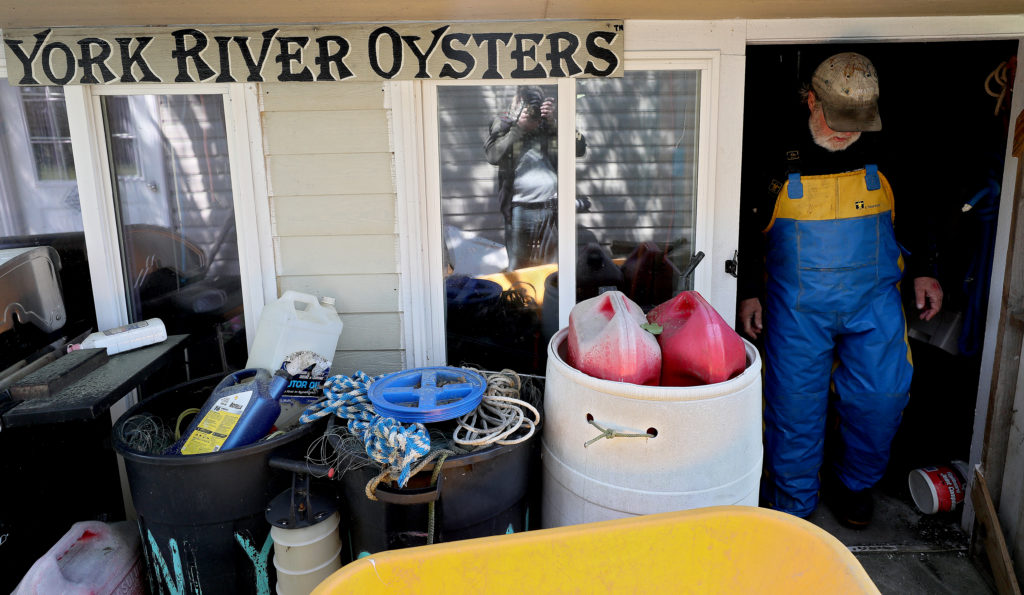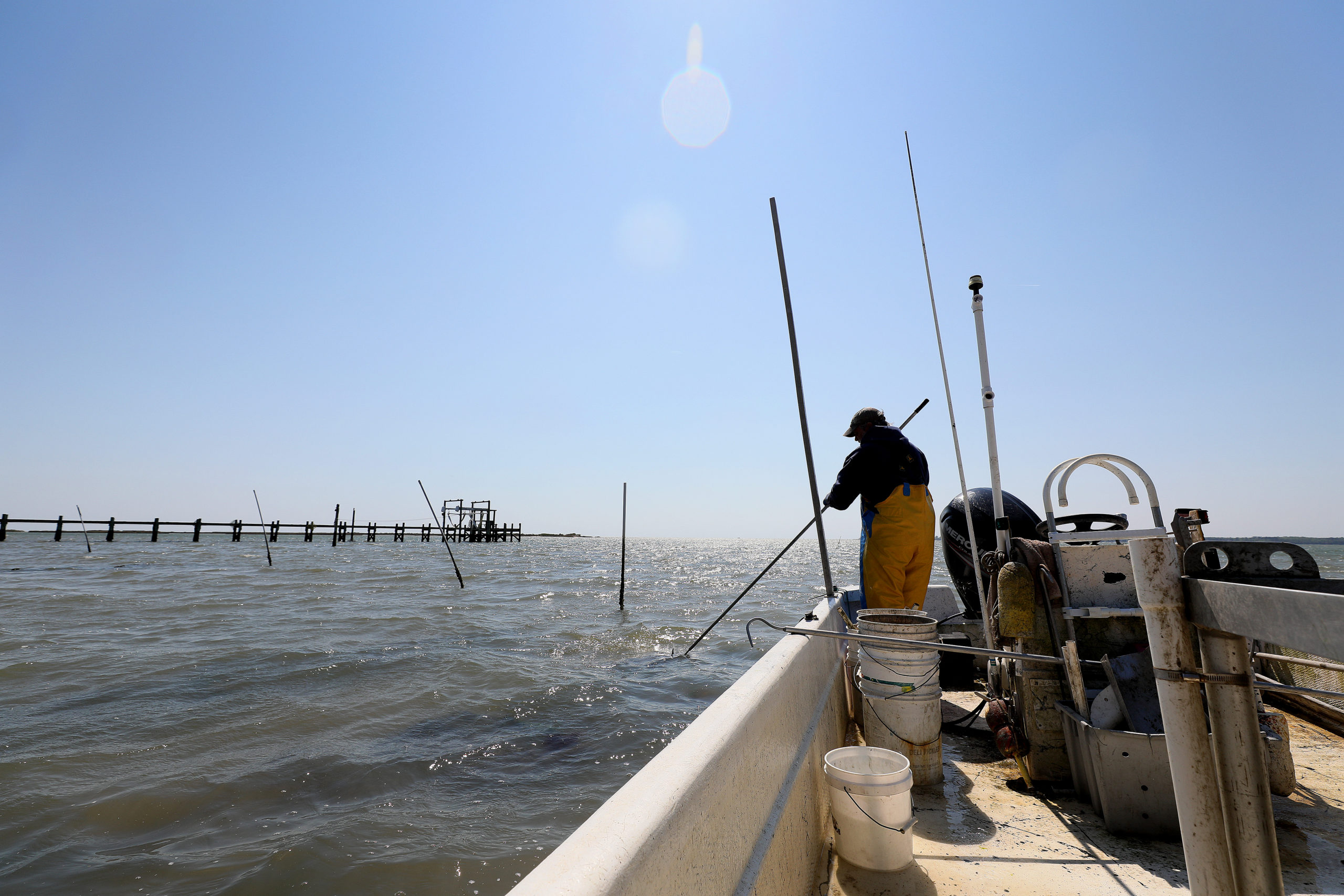Tommy Leggett has fun harvesting oysters.
Really.
Watching him scurry about a yard in Gloucester that backs up to the York River, it might not be obvious at first. An inviting back porch looks like a cozy calling on an unseasonably warm fall afternoon.
Maybe later.
“I do things as long as they’re fun,” says Leggett, walking about in a sweatshirt, a John Deere ballcap and shorts that won’t be replaced by pants until well into December. “When they’re not fun, I do something different.”
What might sound overly simplistic makes perfect sense to the owner of York River Oysters, who got his start as a waterman in 1981. Harvesting oysters came later. Don’t confuse the two.
“A hard day of oysters is an easy day of being a waterman,” he says, recounting 12-hour shifts that started with wakeup calls at 1.a.m. for crabbing and 3 a.m. for clamming.
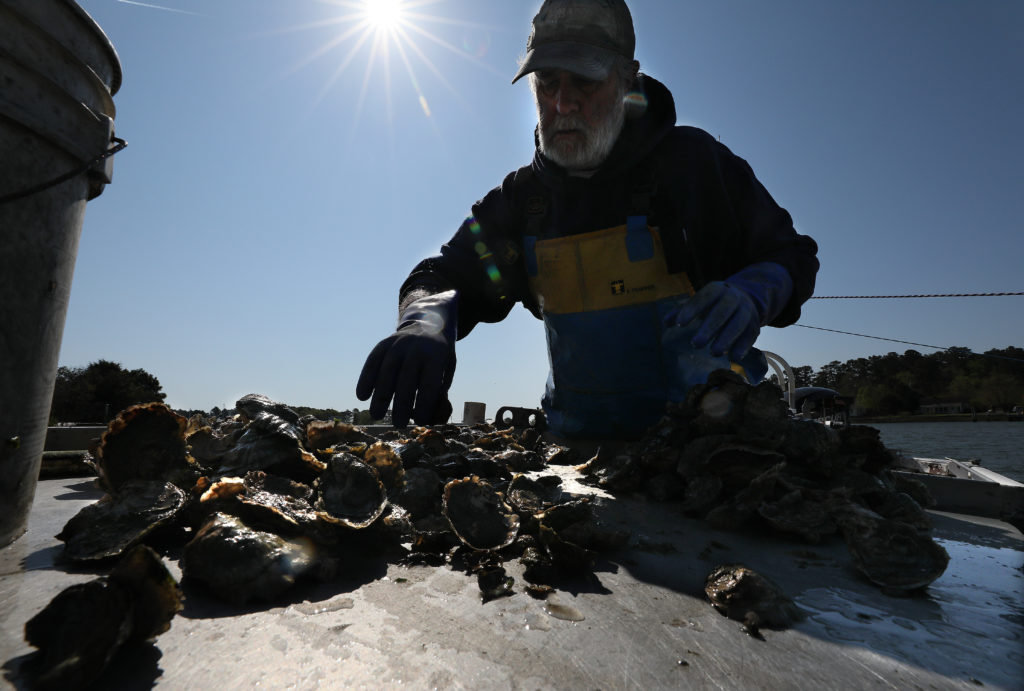
Leggett sleeps in until 4:30 these days, and ideally, by 4 p.m. he’s out making deliveries, chit-chatting with customers who have become friends. He doesn’t operate the company on a large scale any longer, labeling his business more of a “boutique.”
Leggett sells at a trio of Williamsburg restaurants and farmers’ markets, too. He’s happy to provide oysters for small roasts or shucking events, and by appointment, he offers boat tours of his farm along with an explanation of his version of aquaculture that starts with acquiring the seed, which are initially no bigger than a grain of sand, from Virginia hatcheries. He has what he dubs his own nursery — a filtration tank called an upweller — where he nurtures them during the spring until they go into water.
Everything about how he grows in the York River is environmentally friendly right down to the type of motor on his boats. He relies on one that is fuel efficient and pollution free.
His catch includes three grades — Petites, tasty on the half shell; Pearls, excellent steamed; and Reefs, easy to shuck and fry.
While his competitors plant upwards of one million oysters annually, he estimates he’s closer to 200,000 and that’s fine with him.
“I don’t need to do this,” he mentions again.
Leggett’s 65. He signed up for Medicare and will draw Social Security soon. He’s replaced both knees. He’d like to visit his son in the Coast Guard more, and part of him wouldn’t mind moving to Tangier Island.
But he’s not ready to give up this day job, where he’s both boss and employee. Leggett works alone and he’s adamant about keeping it that way.
“If I can’t do it myself, I’m not going to do it,” he says. “I don’t need the stress, the headache or the aggravation.”
He might sound gruff, but really, he’s passionate in an unassuming manner. Leggett doesn’t have any patience for a crew of workers ready to clock out on the hour who are in it for the Saturday paycheck.
“I’ve raised my family,” he says. “I don’t need to babysit.”
But he’s happy to mentor an oyster farmer willing to learn and work hard, an entrepreneur invested in the process who is conscious of the environment.
“They’ve got to have skin in the game,” he says. “’ll help them get off their feet and get started.”
With 40 years experience working on the Chesapeake Bay, Leggett is a lexicon of knowledge on restoration, ecology and oyster farming. He went the academic route for a while after being smitten with Jacques Costeau documentaries as a youngster.
Leggett holds a biology degree from Old Dominion University and a master’s from the School of Marine Science at William and Mary.
He started a doctorate program at the Virginia Institute of Marine Science, but burnout and disillusionment after one year caused him to rethink.
It was 1979, and he married Hayes native Kim Scott who, like him, isn’t wild about having too many people hanging to chatter. “I was ready for a change,” he says, and rather than read about ecology, he opted to be a waterman.
“We were poor as church mice,” he says. “We didn’t have two coppers to rub together, but I did it. I never look back. I never regretted it.”
He had his own workboat built — a 40-footer that he documented from the first nail to the final one in a photo album he still cherishes. He had read about something called aquaculture, but the times weren’t ripe for it just yet. Clams and crabs dominated his way of life for a while, but he yearned to grow something of his own.
When his wife’s uncle took him out on a boat, the men talked oysters. “I got touched by the bug,” he says. “I loved the idea of doing something for yourself and making money.”
By 1990, the Virginia Institute of Marine Science began to use locals to experiment with the idea of growing oysters in floats.
“I’ve been doing this since 1995,” says Leggett, who also worked as an oyster restoration and scientist for the Chesapeake Bay Foundation. “I wasn’t one of the first people in Virginia to do it, but I was close.”
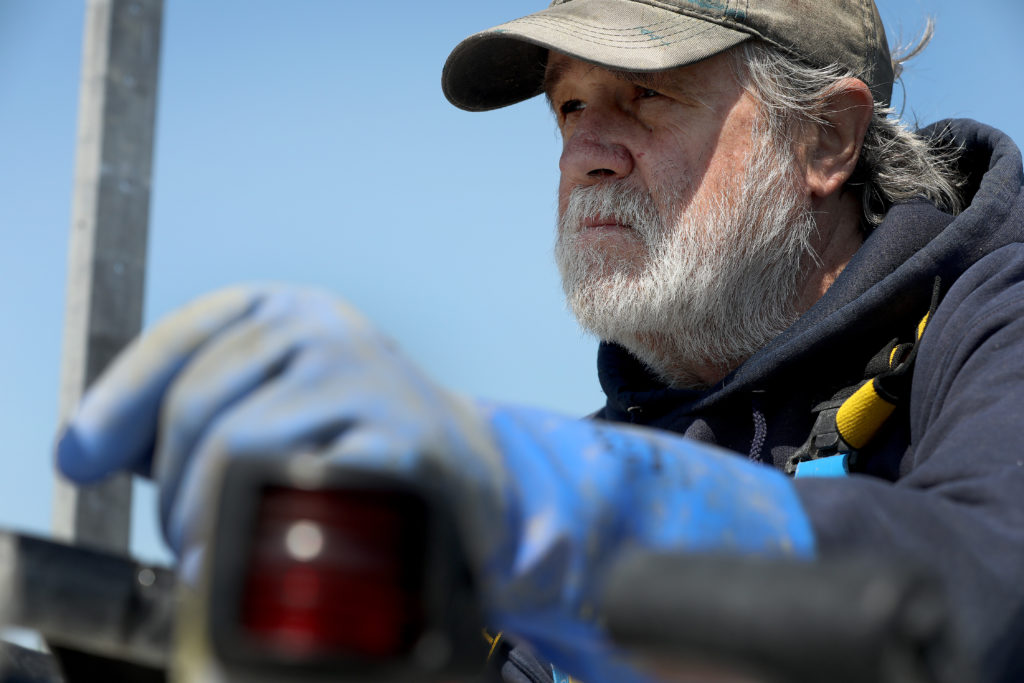
Nothing to hear
Out on a boat, he points to York County one way, to the Chesapeake Bay another way and 25 miles or so away
“That’s the ocean,” he says. “These oysters are moderately salty and sweet and it’s because of that proximity to the ocean.”
It’s a lovely afternoon for a boat ride, and roughly 10 minutes or so after leaving his home pier, Leggett makes a stop at an oyster bed. He uses a spud pole to anchor his boat near a couple of stakes that indicate oyster cages below. Using a gaff, he snags a heavy mesh bag. The oysters make a clatter when he pours them on a table to count.
Lifting would be easier with a crane, but in case you’ve forgotten, he doesn’t want help.
“It’s labor intensive, but this is set up for me,” he says, fishing another bag out with the gaff. “I know where everything is. I’m much happier worrying about me.”
He could bring a radio on the water — in fact he did for a while — but as much as he enjoys music, that’s not what he wants to hear.
“You hear that?” he asks.
There’s nothing to hear — minus the breeze, a gull, water smacking against the sides of a boat.
No notifications from a smart phone; Leggett doesn’t own one. He’s got a flip phone that he left at home, his typical pattern.
“It’s peaceful,” he says. “A good day in the summertime is when I start out at sunrise or a little before and I’m watching dolphins jumping. That happens very routinely. Once I could hardly get out of the creek because there were so many dolphins blocking my access. So yeah, sunrise, light wind, dolphins. It’s just tranquility. Nobody out here bothering you.”
He pulls out any oysters too small to sell and bags the rest, giving them a couple of rinses in the York before making his way back home.
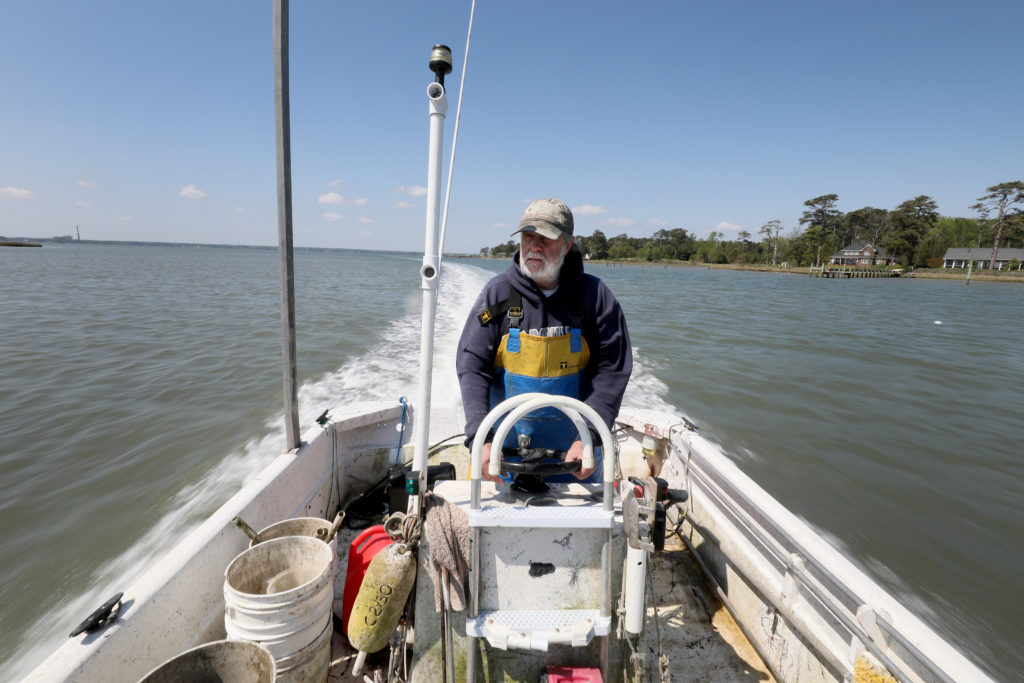
An environmental steward
Ashore again, he passes baskets on top of baskets full of shells that are due to go back in the bay.
“I save the shells and put them back in the water for habitat,” he says. “A lot of people would use them for their driveways. These came out of the water. They should go back in the bay where they belong. I’m not a raging tree hugger, but I try to do my part.”
The oyster catch goes into a wheelbarrow; a few chickens strut by as he passes them en route to a refrigerator inside a shed. His Great Dane/Shepherd mix, Sully, barks continuously inside, and a feral cat Leggett calls Kitty Goose has made his home on the porch. He recently constructed a house that allows Kitty Goose to peer in the window — a delightful diversion for the cat.
Leggett remarks about how he would like to sit on the porch more. Sometimes he thinks it would be nice to check out more history around the Commonwealth — Mount Vernon or Charlottesville. But vacations for him just about always mean a cruise.
Forget visiting a big city or urban living. Norfolk-born, he says, “I’d rather be in Afghanistan with a water pistol than live in the city of Norfolk. I’ve been living on a creek or tributary or the Chesapeake Bay my entire life. I don’t feel well unless I’m on the water or close to it.”
Not only hasn’t he grown tired of harvesting oysters, he eats them regularly.
The York River Oysters website is full of recipes — oyster stew, fried oysters, Emeril Baked Oyster Dressing — “but to fully appreciate the taste, you can’t load ’em up with stuff.”
Shucking a petite one, he hands it off. So good raw, he insists. “A plug of salt following by sweet. It’s like kissing the sea.”
